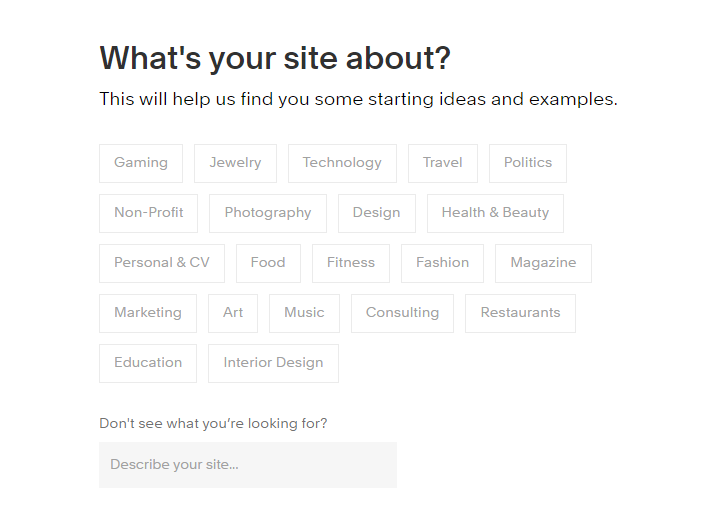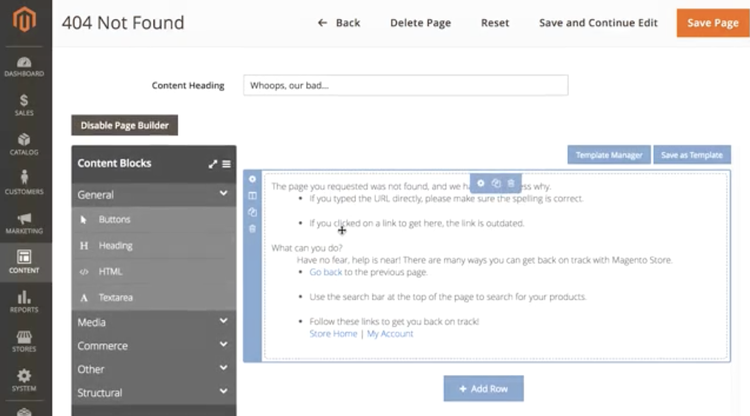When you’re ready to start selling online, you'll need an easy e-commerce solution that allows you to create a user-friendly and visually attractive business storefront.
It should include features that let you manage your inventory, track sales and customer behavior, encrypt payment info, market your products, and do much more.
Without breaking the bank, the top e-commerce platforms should make your journey to online sales a relatively smooth one.
Here are our top picks for the best e-commerce software for small businesses:
- Shopify
- Squarespace Commerce
- WooCommerce
- Volusion
- Magento
What to consider when choosing an e-commerce software
When researching e-commerce CMS, certain factors and functions are nonnegotiable. Narrow your search to site builders that have what it takes to successfully launch or revamp your online business.
Security and SSL
If you’ll be managing an online store, you'll be dealing with sensitive data. With each transaction, your system handles payment info, location data, and other sensitive information, so security is extremely important.
Any good online store software should have ingrained Secure Sockets Layer (SSL) protection (that is when your URL starts with an "https"). This level of security keeps your customers' data secure and safeguarded against phishing. All our top choices have SSL available.
Ease of use
The best e-commerce systems recognize that not everyone is a coder. Drag-and-drop editors or page builders that utilize streamlined content blocks allow you to construct your pages and upload and manage your inventory with little resistance and less time.
From setup to ongoing use, your e-commerce site builder should be easy to use and navigate.
Add-ons and integrations
Part of your e-commerce strategy should be expanding the basic functions of a site builder to create something truly custom. Likewise, that e-commerce website builder should function well with other existing tools you use to manage your business.
The more integrations and apps your store builder can work with, the more you can do, and the more manageable your workload will be.
5 best e-commerce software options for small business
Security, ease of use, and software integrations all come into play against features, pricing, and support to give us our top five choices for e-commerce business builders for selling online.
1. Shopify
Shopify is built to make all aspects of your online storefront life (building, sales, fulfillment, customer tracking, cross-channel marketing, etc.) secure and hassle-free.
It knows you are a business owner, not a full-time developer, so it’s easy enough for even non-coders to build into, thanks to dynamic themes and smooth customizations.
Its standard features let you set up and start selling quickly. Shopify takes care of hosting, so your domain is ready to launch from day one, securely.
Plus, if you don’t want to set up an elaborate system or design a business site from the ground up, you can buy an existing marketplace shop, just like you would buy a store in the real world.
Shopify offers more than 3,000 fully functional stores available for purchase, so you can buy a fully operational store without the risk of coming up with the products yourself or building a site to draw traffic.
Shopify also has built-in analytics to track sales, inventory levels, and customer actions, including purchase orders, tracking information, and shopping habits.
Tracking purchase patterns and customer behavior helps manage sales efficiently. Source: Shopify.
Shopify has options for email marketing and the ability to sell through social media. All these features are around just $29/month, so it’s an affordable solution for many businesses.
Read The Ascent’s full Shopify review
2. Squarespace Commerce
As a website builder, Squarespace is known for its sleek and professional templates; its e-commerce version is no exception.
With themes designed for multiple industries and needs, you can showcase your offerings in an exquisite portfolio setting without stressing over design and function.
Underneath each template is a fully operational wireframe that is ready to launch as soon as you are done designing!

Step one with Squarespace involves choosing your specific industry to get template suggestions that match your business. Image source: Author
Designed to grow and scale with your business, Squarespace Commerce ensures you don’t have to worry about staying stuck with a smaller store as your business grows.
You can add items and inventory as well as bandwidth and site functionalities. Squarespace Commerce prioritizes quality, so its offered features are designed around making the sales process better.
You can use the built-in email marketing, for example, to keep in touch with your customers along various points of the sales journey, with the option to set up automated workflows, too. It can calculate taxes and fees too.
Read The Ascent’s full Squarespace Commerce review
3. WooCommerce
If you are looking for a free e-commerce website, WooCommerce (the e-commerce offshoot of WordPress) will be one of your top choices.
That said, it being free is not truly an all-inclusive price point, as you will most likely need to pay for a developer, a domain name, hosting capabilities, and payment integrations.
WooCommerce is also highly scalable, so it can be as small and straightforward as you want or expand to serve all your needs as your operations grow.
Since it's also open-source, there's no dedicated support in terms of account managers and customer representatives. It does have a large user base, so there's an expansive community of knowledge experts and several online resources, videos, and articles.
If you are used to using WordPress as a CMS, WooCommerce will not be hard to learn at all; basically, it's the same setup in the editor. Adding products is pretty much identical to adding pages and content.

With WooCommerce, you can select a theme based on your industry. Image source: Author
It utilizes the amazing blogging capabilities of WordPress while also using impressive integrations, such as dynamic pricing, syncing with accounting software, multiple secure payment gateways, recurring subscription payment models, and much more.
Read The Ascent’s full WooCommerce review
4. Volusion
Volusion was started all the way back in 1999 and has used those multiple decades to fine-tune an efficient user experience. It has dashboards that are easy to navigate and a mainframe that's easy to set up.
All you need to do is design into a premade theme (there are both free and paid options available). Editing is simple, and you know you’ll have a polished finished product. Volusion also has SEO built right in, so you can start ranking in algorithms.
Toolbars are easy to understand, and page editing is accomplished block by block. Simply fill in text blocks to write your product description and upload media to showcase photos or videos of your merchandise. Volusion also provides optional guides for writing descriptions, if you need extra help in that area.

Adding and editing products feels like filling out an intuitive Google form. Image source: Author
Volusion has 24/7 support available and offers multiple levels of support for its plans. But even so, the software is intuitive enough that problems are rare.
Read The Ascent’s full Volusion review
5. Magento
Adobe entered the world of e-commerce with Magento, a site builder that works well for large organizations or growing businesses. It comes with a loftier price tag, but it delivers a lot of quality and customization for the price.
Setting up and editing pages is effortless, as Magento uses intuitive drag-and-drop tools and editing solutions. Magento has a lot of other features that most e-commerce software options don’t include.
Some of these are seeing how your site will look after future changes; creating multiple site versions for B2C sales and B2B sales, individually; allowing B2B customers to negotiate prices and submit bids; creating multiple-user permissions with incredible details; and much more.

You can edit pages and descriptions section by section in Magento’s editor. Image source: Author
There is no standard pricing. You will need to contact a sales representative to get personalized pricing based on your business and your site’s needs. If you can afford it, Magento allows you to expertly tailor your site and can take your e-commerce needs to new heights.
Read The Ascent’s full Magento review
Multiple e-commerce solutions for many varied needs
There are plenty of e-commerce store builders. Whether you have an expansive budget or are running close to $0, you have choices. Make sure you choose a builder that offers the essentials: security, ease of use, and integrations.
Then select one that can also perform multiple additional functions, including email marketing, customer analysis, and inventory management. Your new online store is only a few clicks away!
Our Small Business Expert
We're firm believers in the Golden Rule, which is why editorial opinions are ours alone and have not been previously reviewed, approved, or endorsed by included advertisers. The Ascent does not cover all offers on the market. Editorial content from The Ascent is separate from The Motley Fool editorial content and is created by a different analyst team.